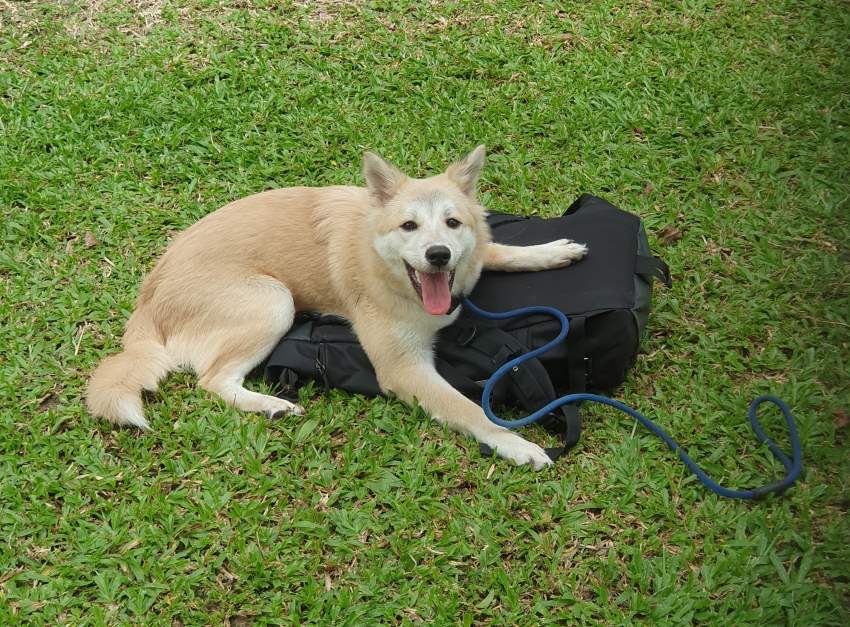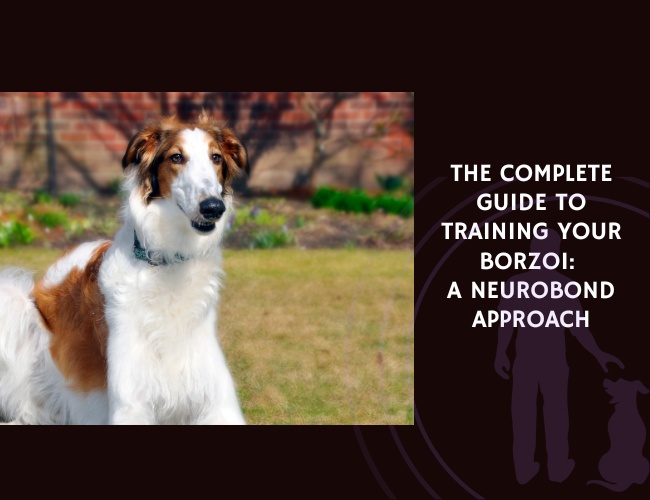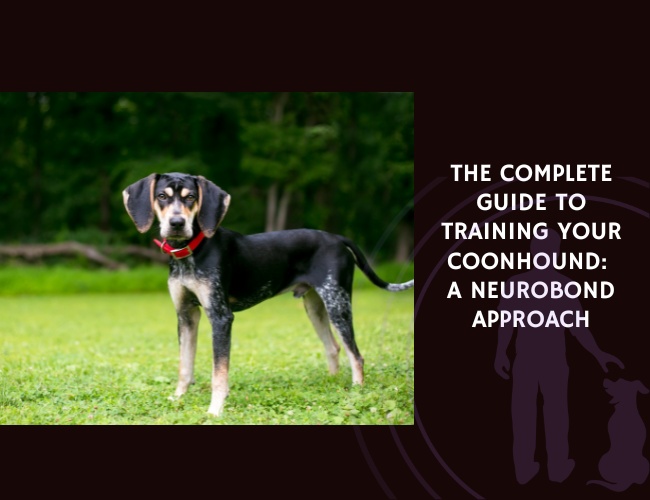Common Misconceptions About Dog Training
Debunking Myths About Breed-Specific Training Ease
One common misconception about dog training is that certain breeds are inherently easier to train than others. While it is true that some breeds have characteristics that can make certain aspects of training simpler due to their genetics, this doesn’t mean training will be a breeze. Each dog, even within the same breed, has individual personality traits and learning styles. This means that training any dog requires patience, consistency, and an understanding of the dog’s unique needs.
For instance, breeds like Border Collies are often touted as highly trainable because of their intelligence and eagerness to learn. However, this also means they need substantial mental and physical stimulation. Without it, they can develop problematic behaviors. Similarly, dogs with reputations for being stubborn, such as Bulldogs, can certainly be trained, but it may require different motivational techniques and extra patience.
Research in the field of canine cognition supports the notion that individual differences play a critical role in training outcomes. Studies have found that factors such as a dog’s previous experiences, its environment, and the relationship it has with its trainer significantly influence its ability to learn. This highlights the importance of adopting a flexible approach to dog training that can be adapted based on the dog’s reactions and progress.
Another myth worth debunking is the idea that older dogs cannot be trained as effectively as younger ones. While puppies might display more malleability in their behavior and seem to pick up new commands quicker due to their developmental stage, older dogs are also capable of learning new behaviors and skills. The key difference may lie in the approach taken; older dogs might require more time to unlearn established habits before adopting new ones, emphasizing the need for patience and understanding from their trainers.
To set realistic expectations, owners should also consider the purpose of the training they are undertaking. For example, training a dog for competitive obedience or agility will require a different level of commitment, technique, and time investment compared to basic household manners.
Addressing Expectations of Natural Good Behavior Without Training
Another common misunderstanding is that some dogs are naturally well-behaved and require little to no training. This belief can lead to unrealistic expectations and eventual disappointment. The truth is, all dogs need guidance to learn how to live harmoniously in a human environment.
Dogs are not born knowing human rules. Behaviors like barking, chewing, and digging are natural to them but might be seen as problematic by their owners. Training is essential to teach dogs acceptable behaviors and discourage undesirable ones. Every dog benefits from basic obedience training and socialization to ensure they can function well in various situations and environments.
Understanding the Reality vs. Marketing Promises
The marketing of dog training tools and services can often give the impression that training a dog is a quick and easy process. Promises of instant results can be misleading and set unrealistic expectations for dog owners. The reality is that training a dog is rarely a quick fix and requires a continuous effort.
Gadgets like shock collars, treat dispensers, and specialized toys might claim to be the solution to all training issues. However, these tools work best as part of a broader, consistent training approach. Likewise, professional dog trainers can be incredibly helpful, but hiring one does not absolive the owner from putting in the necessary work at home.
Successful dog training involves consistency, persistence, and time. It is about building a bond between the dog and the owner, based on understanding and trust. Owners should be wary of any marketing that claims to offer a fast track to perfect behavior without underscoring the need for ongoing efforts and involvement.
It is crucial for dog owners to set realistic expectations and remain committed to the training process. By debunking these common misconceptions, dog owners can better understand what to expect and how to effectively train their canine companions.
With these insights, dog owners can better navigate the journey of training their pets, ensuring both they and their dogs can enjoy a more harmonious relationship. As we move forward, we will explore further aspects of understanding normal dog behavior, setting realistic timelines, and managing expectations to create a successful training experience.
Understanding Normal Dog Behavior
Typical Behavioral Patterns in Different Development Stages
Understanding your dog’s behavior begins with recognizing that, like humans, dogs go through various development stages, each with their own typical behavior patterns.
Puppyhood (0-6 months)
During puppyhood, dogs are in their most formative stage. This period is marked by rapid growth and development. Puppies are naturally curious, energetic, and eager to explore their surroundings. In this phase, it’s common to see behaviors such as:
- Biting and chewing: Puppies explore the world with their mouths. Chewing helps alleviate the discomfort of teething.
- Playfulness: Engaging in playful activities is crucial for social development and learning.
- Potty accidents: Puppies are still learning bladder control and need frequent breaks to avoid accidents indoors.
Adolescence (6-18 months)
Adolescence in dogs can be much like the human teenage years – a time of hormonal changes and growth. Expect to see:
- Increased independence: Adolescent dogs may become more independent and sometimes less obedient.
- Test boundaries: It’s a time when they might challenge the constraints of earlier training.
- High energy: They retain a lot of energy and require more physical and mental stimulation.
Adulthood (18 months onwards)
Adult dogs generally have a more established temperament, and their energy levels may stabilize. Typical behaviors include:
- Steady habits: With consistent training, adult dogs develop reliable habits and routines.
- Territory marking: Some dogs may mark their territory, especially if they are not spayed or neutered.
- Social interaction: Adult dogs have learned how to interact with other dogs and humans appropriately.

Recognizing the Difference Between Normal and Problematic Behaviors
Identifying normal canine behavior versus problematic ones can sometimes be challenging. However, understanding these distinctions is key to addressing and managing your dog’s behavior effectively.
Normal Behaviors
- Barking: It’s natural for dogs to bark, but understanding the context is crucial. Barking to alert, greet, or express excitement is normal.
- Digging: Certain breeds are predisposed to digging, especially if their natural instincts lead them to do so.
- Chewing: Puppies chew to alleviate teething pain, while adult dogs may chew to keep their teeth clean and jaws strong.
Problematic Behaviors
- Excessive Barking: This could indicate anxiety, lack of exercise, or insufficient stimulation.
- Destructive Digging: If digging becomes constant and destructive, it may signify boredom or anxiety.
- Aggression: Unprovoked aggression toward humans or animals is a serious behavior issue that requires immediate intervention.
How Environment and Training Influence Behavior Development
A dog’s environment and the training they receive play significant roles in shaping their behavior. Here’s how these factors come into play:
Environment
- Consistency: An environment offering consistent rules and routines helps dogs feel secure and understand what’s expected of them.
- Socialization: A well-socialized dog, exposed to various people, animals, and environments from a young age, is often more well-adjusted.
- Physical Space: Sufficient space for exercise can prevent some problematic behaviors stemming from pent-up energy.
Training
- Positive Reinforcement: Encouraging good behavior with treats, praise, or playtime fosters a positive learning experience and strengthens the owner-dog bond.
- Early Training: Starting training early in a dog’s life builds a solid foundation and helps prevent bad habits from forming.
- Consistency and Patience: Consistent commands and a patient approach are crucial for effective training. Inconsistency can confuse your dog and hinder progress.
Recognizing and understanding normal dog behaviors at different developmental stages is a key part in setting proper expectations for training. Aiding these behaviors with the right environment and consistent training nurtures a well-adjusted and happy dog.
By acknowledging that behavior issues can be addressed and corrected with the right approach, you set the stage for a successful training journey.
Setting Realistic Training Timelines
Factors That Influence Training Duration
When embarking on a journey to train your dog, it’s crucial to understand that training duration can vary significantly due to various factors. These include the dog’s age, breed, prior experiences, and even your consistency as a trainer.
- Age: Puppies are generally more malleable and can absorb new information quickly. However, they also have shorter attention spans, requiring more frequent but shorter training sessions. Conversely, adult dogs may take longer to unlearn established habits, but they typically have better focus during training.
- Breed: While it’s a common misconception that certain breeds are inherently easier to train, it’s more accurate to say that each breed has unique characteristics. For example, herding breeds such as Border Collies may be more eager to please but can become bored without sufficient stimulation. On the other hand, independent breeds like the Shiba Inu might require more motivation and patience.
- Prior Experiences: A rescue dog with a history of neglect or abuse might need more time to build trust and feel comfortable in a new environment. This trust-building phase is essential before any effective training can begin.
- Consistency of the Trainer: Perhaps the most critical factor is your consistency. Regular, positive reinforcement training, and maintaining a routine, greatly enhance the speed and success of training.
Typical Timeframes for Different Types of Training
Understanding typical timeframes for different types of training can help set realistic expectations.
- Basic Obedience: Commands like “sit,” “stay,” “come,” and “heel” can generally be taught to a puppy within a few weeks to a few months, given daily, consistent practice. Adult dogs might take a bit longer, especially if they need to unlearn previous behaviors.
- House Training: This can vary widely. Puppies might be house-trained within three to six months, while adult dogs could take less or more time depending on their previous experiences and general anxiety levels.
- Advanced Training and Tricks: More complex commands and tricks like “roll over,” “play dead,” or agility training can take several months to perfect. The key is incremental steps and lots of positive reinforcement.
- Behavioral Training: Addressing issues such as aggression, anxiety, or excessive barking can be more time-consuming. It often requires months of consistent training and sometimes professional help from a behaviorist.

Importance of Consistent, Long-Term Training Commitment
Training a dog is not a one-time event but a long-term commitment. Here’s why maintaining consistency and long-term dedication is essential:
- Reinforcement of Good Behavior: Consistency helps reinforce good behaviors. Dogs thrive on routines, and regular training sessions help them understand and retain what is expected of them.
- Preventing Regression: Without ongoing training, dogs can easily revert to undesired behaviors. Regular practice sessions ensure that they retain what they’ve learned and continue to improve.
- Building a Strong Bond: Consistent training strengthens the bond between you and your dog. Through regular interaction and positive reinforcement, you build trust and mutual respect.
- Adapting to New Situations: Long-term training helps dogs adapt to new environments, people, and situations more readily. This adaptability is crucial for their overall well-being and socialization skills.
- Mental and Physical Stimulation: Ongoing training provides both mental and physical stimulation for your dog, which is essential for their health and happiness. Engaging their brains with new commands or activities keeps them sharp and prevents boredom-related behaviors.
Setting realistic training timelines ensures you and your dog can enjoy a harmonious relationship built on patience, consistency, and mutual respect. Remember, every dog is unique, and while setbacks are normal, perseverance leads to lasting positive change.
Understanding these training timelines and factors sets the stage for recognizing and managing expectations effectively.
Managing Expectations vs. Reality
When you’re training your dog, it’s crucial to keep a balanced perspective. Many new dog owners have idealistic expectations, anticipating a swift and smooth training process. However, realities often differ. Let’s delve into common challenges faced during the training process, understand that setbacks are normal, and recognize progress in small improvements.
Common Challenges Faced During the Training Process
Training your dog may seem daunting, and several obstacles can make the journey challenging:
- Consistency Issues: Consistent training is fundamental yet hard to maintain. Family members need to be on the same page, using the same commands and reinforcement techniques. Discrepancies can confuse your dog and hamper progress.
- Distractions: Dogs are easily sidetracked, especially in environments with numerous stimuli. Training your dog in varied settings helps them learn to focus despite distractions, but achieving this takes patience.
- Behavioral Setbacks: It’s not uncommon for dogs to regress in their training, particularly during adolescence or when their routine changes. Recognizing this as a normal part of development rather than a failure is vital.
- Health and Diet: An underlying health issue or improper diet can affect your dog’s ability and willingness to train. Make sure your dog is healthy and well-nourished for optimal training results.
- Owner Frustration: Dogs sense your emotions. If you’re stressed or frustrated, your dog might become anxious, making the training sessions less effective. Maintaining a calm demeanor can foster a more conducive training environment.
Understanding That Setbacks Are a Normal Part of Training
Just as setbacks are part of life, they’re also an integral aspect of dog training. Here’s why you shouldn’t lose hope when facing them:
- Developmental Stages: Different growth stages, like adolescence, bring their own challenges. During these periods, some previously learned behaviors may fall apart. It’s critical to be patient and persistent.
- Routine Changes: Any alteration in routine can upset your dog. This could be anything from a change in your work schedule to a new family member. Give your dog time to adjust and reinforce training basics.
- Learning Curve: Dogs, like humans, have diverse learning paces. Comparing your dog’s progress to others can be detrimental. Focus on your dog’s individual journey and celebrate their unique achievements.
Recognizing Progress in Small Improvements
Tracking incremental progress can be motivating for both you and your dog. Some ways to recognize these small wins include:
- Daily Moments: Observe your dog’s behavior in everyday situations. Even minor improvements, like waiting calmly for their food bowl, signal progress.
- Consistency Over Time: Pay attention to behaviors that have become second nature to your dog. If once they jumped on guests but now they sit quietly, that’s a significant advancement.
- Training Logs: Keeping a journal of your training sessions helps in noting progress you might overlook otherwise. Entries can include new commands learned, instances of good behavior, and challenges faced.
- Positive Feedback: Regularly acknowledge and reward your dog’s small successes to reinforce those behaviors. This positive reinforcement solidifies their learning.
Understanding that the road to a well-behaved dog is long and sometimes winding is the first step towards effective and compassionate training. By accepting these realities, every setback transforms into an opportunity to forge an even stronger bond with your furry friend.
Building a Successful Training Foundation
Importance of Owner Education and Preparation
Creating a strong training foundation for your dog begins with educating yourself. As an owner, understanding dog behavior, training techniques, and the importance of consistency is crucial.
Knowledge empowers you to handle various situations confidently. Educating yourself includes:
- Learning typical behavioral patterns for your dog’s breed and age.
- Understanding common training methods and their applications.
- Familiarizing yourself with positive reinforcement techniques.
- Being aware of signs of stress or discomfort in your dog.

Take advantage of resources such as books, reputable online courses, and professional trainers. Remember, preparation isn’t just about reading; it’s also about setting up your home environment for success. This includes creating a designated training space and ensuring you have essential training tools like treats, clickers, and leashes.
Developing Realistic Training Goals
Setting realistic goals is key to a successful training program. Remember, each dog is unique, and progress can vary greatly. When developing your training goals, consider the following steps:
- Identify Prerequisites: Understand the basic skills your dog should have before advancing. For example, teaching “sit” before expecting “stay.”
- Set Short-Term Goals: Break down complex behaviors into smaller steps. For example, teaching your dog to come when called can start with responding in a confined space before moving to a larger area.
- Be Specific and Measurable: Goals should be clear. Instead of “improve behavior,” aim for “reduce barking by 50% within two months.”
- Consider Your Schedule: Be realistic about the time you can dedicate. Regular short sessions are often more productive than infrequent long ones.
- Adjust as Needed: Flexibility is important. Modify your goals based on your dog’s progress and any setbacks.
By setting achievable goals, you create a roadmap that helps both you and your dog navigate the training journey with clear direction and motivation.
Creating a Sustainable Training Routine
A sustainable training routine ensures continuous progress and maintains the skills your dog learns. Consistency and repetition are essential for your dog to understand and retain new behaviors.
Here are some tips to create and maintain a routine:
- Integrate Training into Daily Life: Include training in daily activities. Short sessions during walks or mealtime can reinforce learning.
- Consistent Timing: Train at the same time each day. Dogs thrive on routine, and consistent schedules help reinforce behaviors.
- Balanced Sessions: Mix training with play and relaxation. This keeps your dog engaged and prevents frustration.
- Positive Reinforcement: Use rewards to motivate and reinforce good behavior. Treats, praise, and play can be effective incentives.
- Track Progress: Keep a training log to monitor successes, setbacks, and patterns. This helps in making necessary adjustments.
Consistent, sustainable routines help build long-term habits, making training a natural part of your dog’s daily life.
By focusing on education, realistic goal setting, and sustainable routines, you lay the groundwork for successful training. This foundation supports your dog’s growth and your role as a confident, informed trainer. Training is an ongoing journey, and every effort you put in strengthens the bond between you and your dog.










